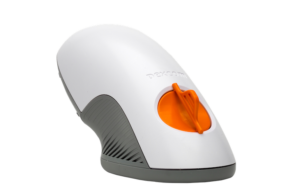
Continuous glucose monitors (CGMs) are among the most potent diabetes management tools to emerge in recent decades.
FDA approved the first professional CGM in 1999, and the technology has evolved swiftly since then. Current models beam data via Bluetooth to smartphones (plus the Apple Watch) and the cloud, enabling patients to explore their blood glucose readings in an app or via downloadable PDFs.
“Decades ago, we were still checking urine sugars,” said Dr. Egils Bogdanovics, a Connecticut-based endocrinologist. “In the early 1980s, fingerstick blood glucose monitors came out. That was a big deal — a revolution in diabetes,” Bogdanovics recalled.
But the fingerstick blood glucose monitor provides more of a snapshot than a moving picture. “About 15 years ago, professional continuous glucose monitoring was introduced. Initially, it was just endocrinologists [who used it], and we used it in what we called a retrospective manner.” Endocrinologists had patients wear CGMs for initially three days and later 10 days as the technology evolved. After that point, “we looked at the data to recognize patterns for people who were on insulin.”
Professional CGMs later morphed into personal CGMs. “Initially, the main emphasis was to avoid hypoglycemia,” Bogdanovics said. For patients with type 1 diabetes, there is the risk of so-called “hypo unawareness,” where blood sugar levels fall to dangerous levels before a patient notices there is a problem. With a CGM, “an alarm would go off at 3 a.m. and you can avoid having a hypoglycemia emergency requiring glucagon,” he added.
As CGMs have evolved and become more user-friendly and long-lasting, people with diabetes are using them not just for hypoglycemia but overall blood glucose control. “This is anecdotal, but when we put patients on CGMs, their A1C’s tend to come down a couple of points,” Bogdanovics said, referring to the hemoglobin-based test that provides an estimate of blood sugar levels over the past three months.
One traditional challenge of A1C numbers — before CGMs were widely available — is that they only provide a long view of blood sugar. Two patients could have a moderately high A1C reading of 7, but one might have relatively stable blood sugar control while the other might have frequent peaks and valleys in glucose.
“That’s where this ‘time-in-range’ comes in,” Bogdanovics said, referring to CGMs ability to determine how often people with diabetes are in a specified blood glucose window. “We can avoid highs and lows, and have the blood-glucose average nice and tight.”
“The metric in diabetes since CGMs came out is starting to change,” Bogdanovics added. “It’s not just A1C — it’s how much of that time is spent in that target range.”
CGMs also allow people with diabetes to be better-informed in their insulin use. “Regardless of how you get your insulin — insulin pumping or multiple daily insulin injections — the most important thing is CGM,” Bogdanovics said. “It’s markedly better control, and less time with [blood-glucose] lows than an insulin pump with finger sticks or multiple injections with finger sticks.”
There are also a growing number of insulin pumps designed to work with CGMs. The Dexcom (NSDQ:DXCM) G6, for instance, supports the Tandem t:slim X2 insulin pump. “It gets real-time Dexcom CGM data, and it can anticipate that the blood sugar is actually going to drop below normal and slow down the rate of infusion.”
Similarly, if a patient’s CGM glucose reading is above normal, the pump can increase insulin infusion rate.
Another example of a CGM-insulin pump combo includes the Medtronic (NYSE:MDT) 670G and the t:slim X2. Eli Lilly (NYSE:LLY) and Ypsomed (SWX:YPSN) are also partnering on automated insulin delivery.
Bogdanovics would like to see broader use of CGMs in the future. “In my practice, 85% of anybody on insulin has a CGM, but if you look across the nation, the device penetration is well below 50% — probably somewhere around 35%,” he said. “There’s still a lot of room to improve the use of it.”
In the long run, though, Bogdanovics sees fingerstick-based blood glucose monitoring gradually fading away. “I think CGM is here to stay, and it’s improving,” he said.
The integration with smart devices, in particular, is a powerful tool, Bogdanovics said. Smart devices make it possible for parents, for instance, to keep track of their diabetic children’s glucose levels to ensure they don’t trend too high or low.
The technology is “taking off, but I think that we’ve just got to get the message out there,” Bogdanovics concluded.

